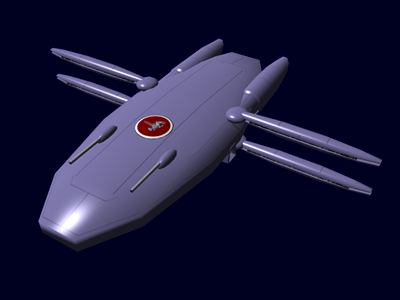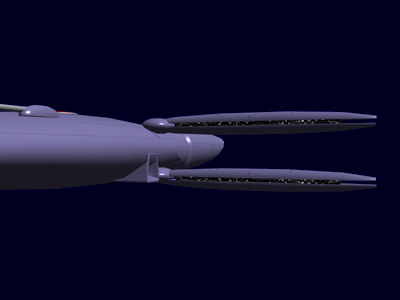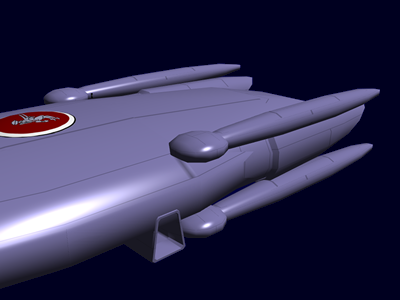Table of Contents
Ke-D6-E3200 Sensor Array
The Ke-D6-E3200 Sensor Array was developed by Kessaku Systems as part of the Midori-Class Scout Ship development in YE 32.
About the Ke-D6-E3200
The Ke-D6-E3200 is a sensor system enhancement to enable the Midori-Class Scout Ship to better perform its mission. It consists of four sensor booms that contain the sensors, and protect them. The sensor array will not operate in the stowed position. What makes the Ke-D6-E3200 more sensitive, is that it simultaneously scans four times, and then processes the data together. This increases the sensitive by a factor of several fold.
Components
The booms are constructed on a Durandium Alloy frame covered in Yamataium plating.
Electronic Detection Sensor (EDS)
Purpose: Detection and identification of electronic equipment. The EDS is designed to pickup electronic emissions. It has a series of antenna arrays that extend when in the target area. The EDS then analyzes the emissions and categories them. Every device that has electrical energy produces some emission unless specifically masked. The EDS recognition software is upgradeable so that as new devices are identified the system can recognize them.
Range: The EDS can detect emissions up to 10 AU away.
Orbital Imaging Sensor (OIS)
The OIS is a cluster of high-resolution cameras with zoom, magnification and auto focus. The OIS can capture Infrared, Thermal, Visible light, with remarkable clarity. Typically used to study a planet, but can also be used to pin point resources, enemy positions, etc.
Range: 500 mile orbit
Geological Scanning Suite (GSS)
The GSS is capable of active scans up to 8000m beneath the planets surface. It uses a combination of electromagnetic, spectrometer and gravimetric scans to actively search for up to 130,000 natural phenomenons and an extensive array of geothermal and geochemical events. (Same feature as on the Orbital Geological Survey Platform)
Range: Orbital
Deep Space Imaging (DSI)
The DSI contains, the following deep space sensors:
- Variable wide-band imaging clusters
- Long-range gravimetric and magnetic resonance, distortion, and interferometry sensors and spectrometers
- Electromagnetic trans-space flux sensors and imaging scanners
- Quark and gluon density scanners, and spin polarometers.
- Long range telescope (50 LY)
Enhanced EWS Array (Type 32 EWS)
This array working in conjunction can do the following:
- Operate out to 3 AU
- Generate “noise” that interferes with enemy subspace, hyperspace, and radio transmissions.
- Generate directed electromagnetic or electrogravitic (scalar) pulses to disrupt sensors.
- Cancel enemy signals by phasing them out.
- An array of volumetric projectors that can create the (massless) illusion of various starships or empty space. Range: 30 million km (1/5th of an AU).
Boom Movement
It takes thirty seconds to deploy or stow the Ke-D6-E3200 Array.
Deployed
When deployed each of the array limbs pivots 90 degrees from its stored position, and then opens up laterally exposing the sensors.


